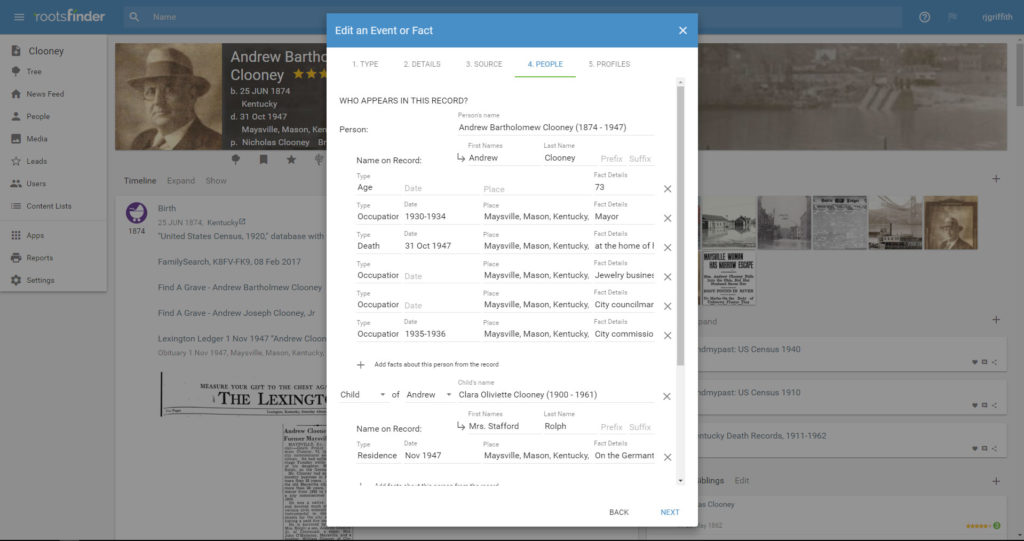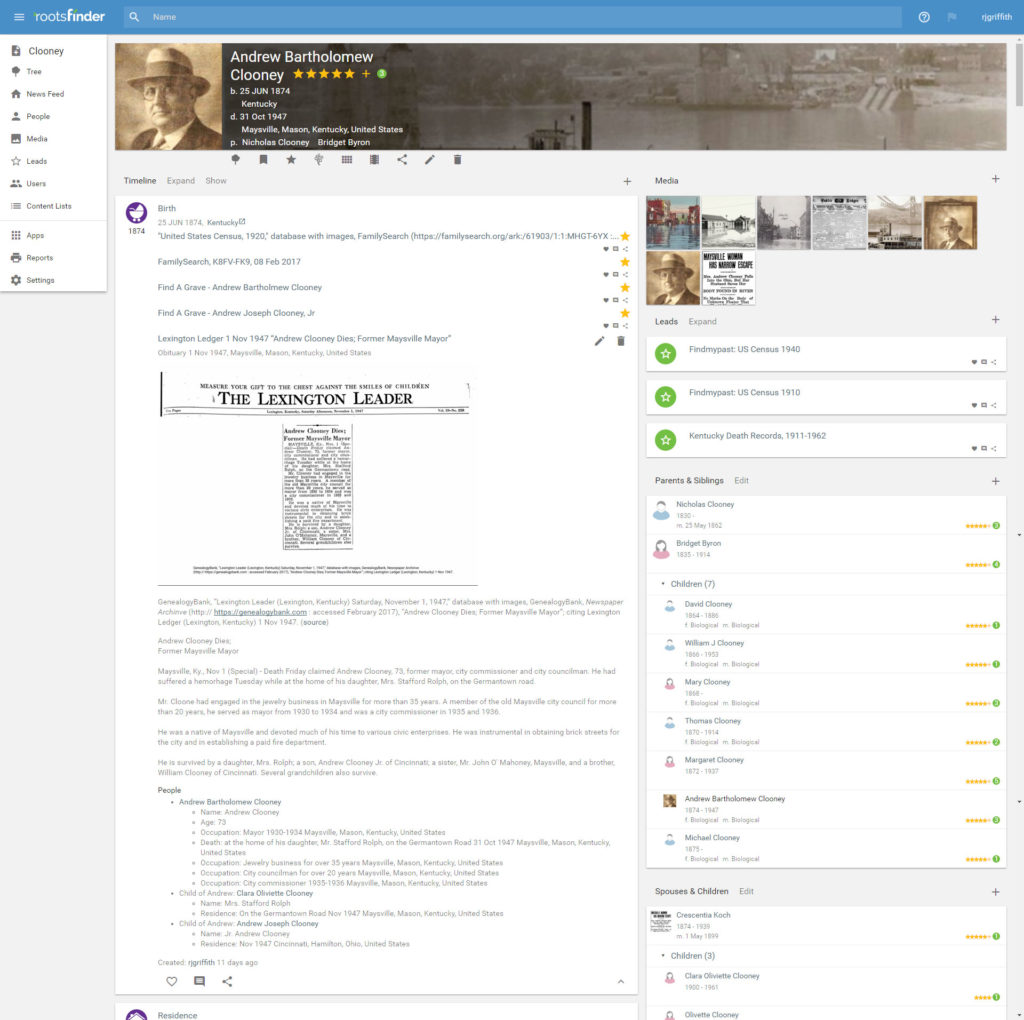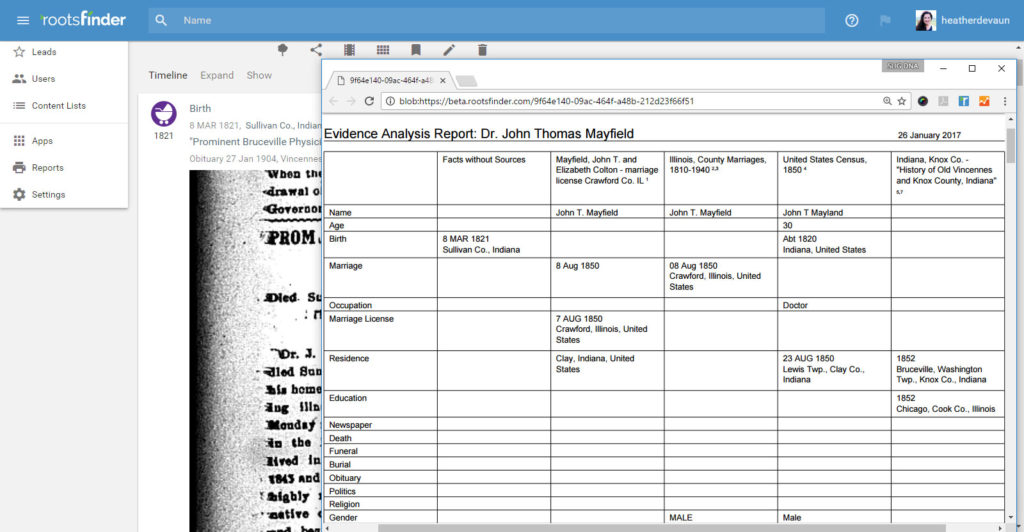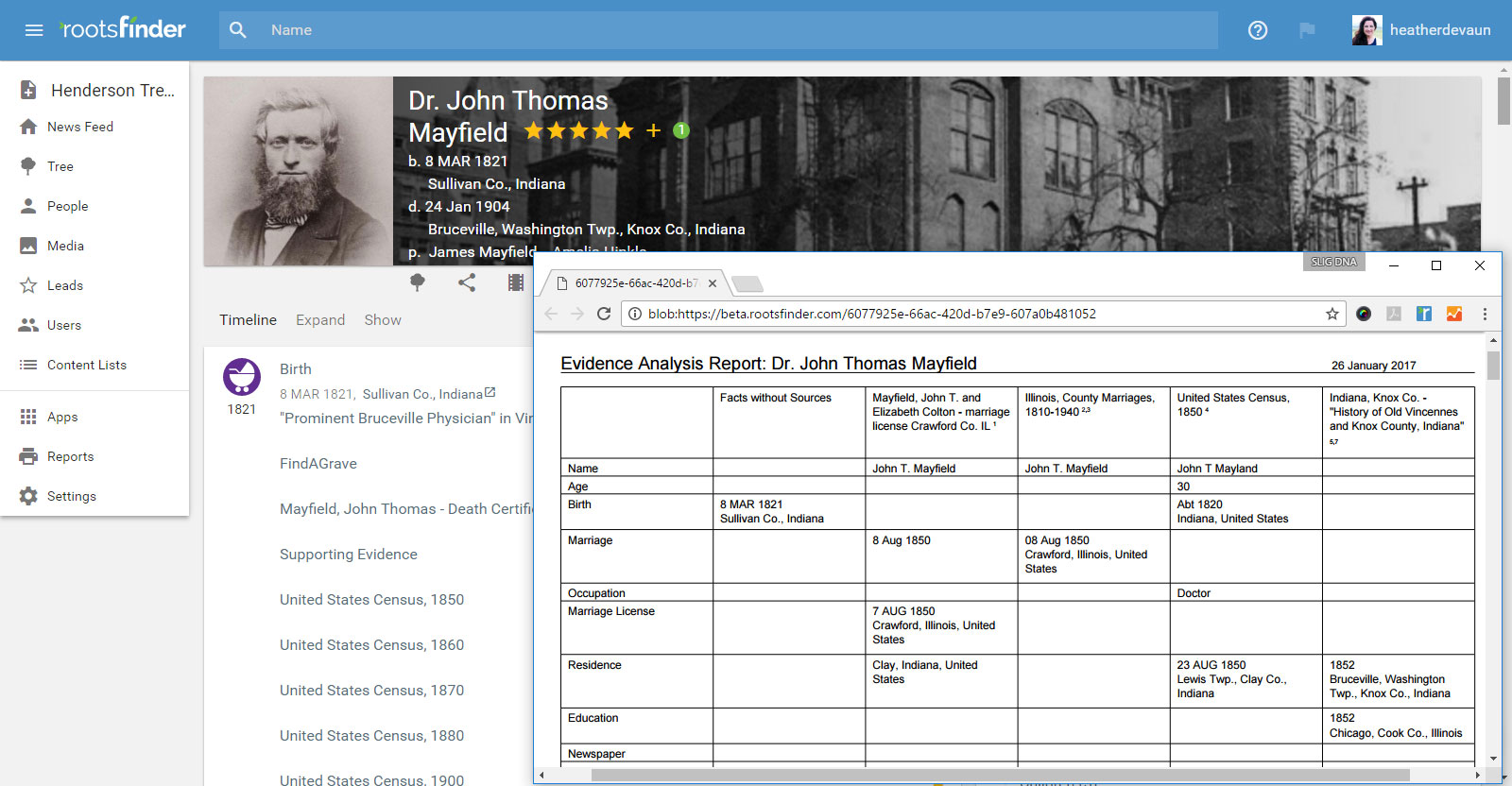One thing that sets RootsFinder apart from other genealogy programs is our evidence-based genealogy approach. We want you to see what information is contained in a source, place the information in context, and then correlate, analyze, and resolve conflicting evidence. These are key steps in good evidence-based genealogy.
What is evidence?
The term evidence has a specific meaning in genealogy and is frequently used without understanding exactly what it means. Evidence, as explained by the Board for Certification of Genealogists (BCG), is “a research question’s tentative answer, which may be right or wrong, complete or incomplete, or vague or specific; may be direct, indirect, or negative.”[1]
Evidence vs. Proof
Therefore when a researcher says they have found evidence of something, they are saying they have found a tentative answer to a question. This is not proof! It may be part of a proof argument, but evidence is not proof. There are five core genealogical standards research must reach in order for evidence to be considered proof, which we will discuss in greater detail another time. For now, we will focus on evidence.
Direct evidence
Direct evidence is a clear statement. If John Johnson’s death certificate provides the maiden name of the deceased’s mother as “Mary Smith,” that is direct evidence that her maiden name was Smith. It may be right, it may be wrong, but it answers the question “What was the mother’s maiden name” in a straightforward manner.
Indirect evidence
Indirect evidence answers questions more circumspectly. For example if there was no maiden name given for John Johnson’s mother on his death certificate, but a passport application for John’s sister Mary Johnson contained their mother’s maiden name, the passport application would be indirect evidence of John’s mother’s name. It would be direct evidence of Mary’s mother’s name and indirect evidence of John’s mother. (Why not direct evidence? Because there is the possibility that they were step siblings. It’s not directly given as information pertaining to him. It was information pertaining to his sister, Mary.)
Negative evidence
Negative evidence answers the research question with “no.” In the case of John Johnson, his death certificate with mother’s maiden name “Mary Smith” could be negative evidence of a prior hypothesis that her maiden name had been Jones. (This simplified example needs a caveat: to meet the standard of proof, it should be demonstrated that Mary had never been named Mary Jones, that Mary Smith was neither a mistake nor a name from a previous marriage.)
RootsFinder’s approach to evidence-based genealogy
With this understanding of genealogical evidence, RootsFinder approaches family history with a new, evidence-based paradigm. We shine the spotlight on sources to see what information they contain to provide direct, indirect, or negative evidence. Some important tools include:
1. The web clipper and “Add Event” dialog
The RootsFinder web clipper and “Add Event” dialog gather all information contained in a source at once. To do this, we begin with a primary person the record is about, then add all the events and relationships mentioned in the source.

2.The Timeline
Events in a person’s timeline can be expanded or collapsed to display the information contained in a source. We show all the information for all people mentioned, along with notes, transcriptions, and images all in the same place. This makes analyzing the information much easier.

3.The Evidence Analysis Report
The Evidence Analysis Report puts sources side by side to show what information they provide compared to one another. This makes correlating and analyzing information much easier because it allows you to see how information changed over time. It gives you an easier way resolve conflicting evidence because you’re able to directly correlate the sources.

We’ll talk more about these tools, evidence-based genealogy, and the Genealogical Proof Standard in later posts, but for now we want to hear your thoughts! Please let us know in the comments if you think RootsFinder’s evidence-based paradigm and supporting tools are helpful, or if there are other tools you’d like to see us develop.
[1] Board for Certification of Genealogists, Genealogy Standards (Washington, D.C.: Board for Certification of Genealogists, 2014), p. 67.



Appreciate this post. I’ve been struggling to find the right niche for RootsFinder in my research process, and evidence management just might be the right fit.